KitchenAid 2 Slice Manual Lift Toaster review
I experts tested the KitchenAid 2 Slice Manual Lift Toaster on a range of different breads
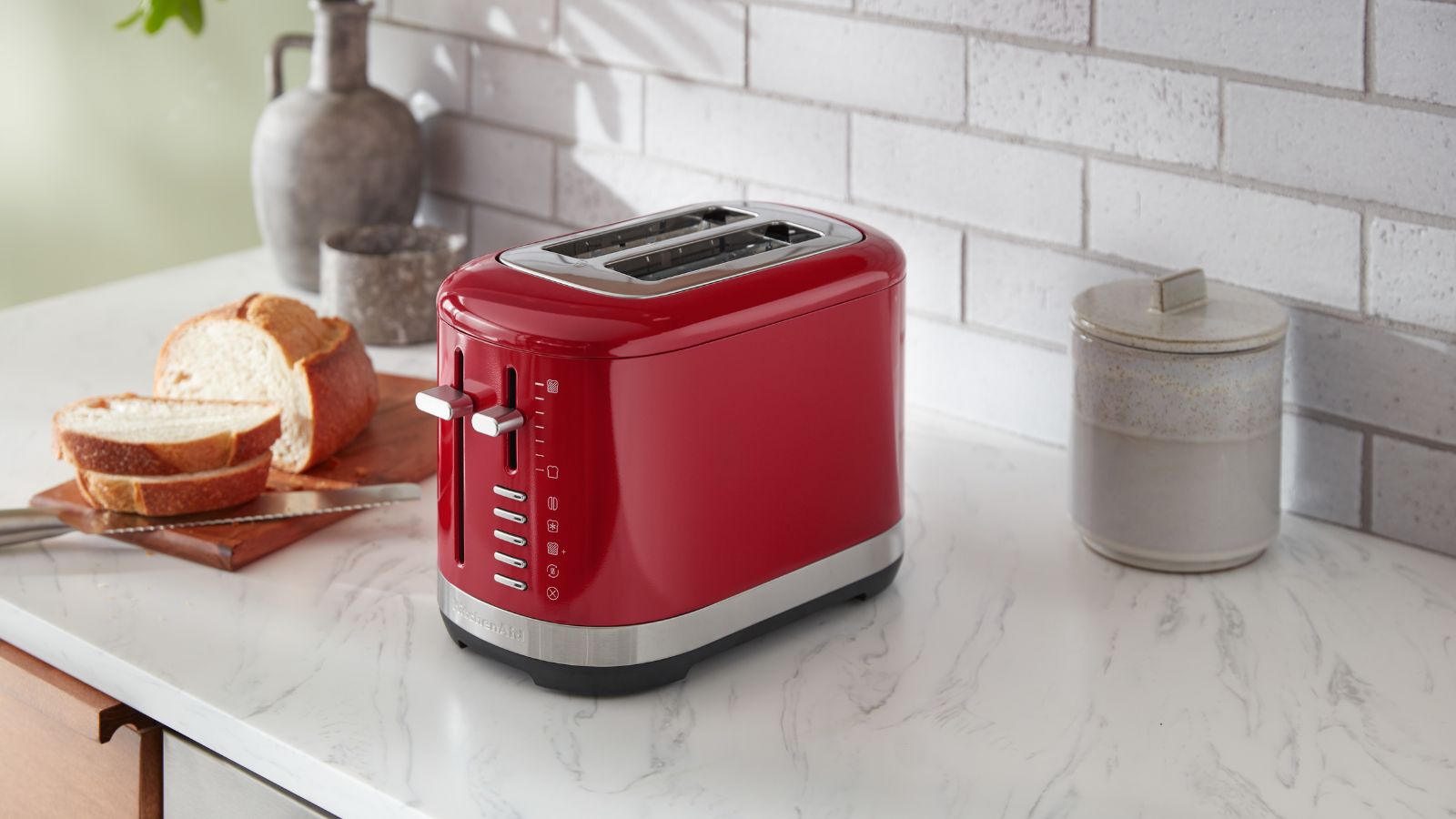
The KitchenAid is a good, basic toaster. The simple settings can do a good job of almost any toast you pop in. It's not particularly high tech, but it's well-built and reliable.
-
+
Inexpensive
-
+
Consistent toasting
-
+
Small footprint
-
+
Wide slots
-
-
Quite boxy
-
-
Limited capacity
-
-
Lack of specific settings
You can trust Homes & Gardens.

The KitchenAid name is almost synonymous with quality. Best known for their iconic stand mixers, the brand has expanded into a range of other kitchen appliances. I was very skeptical at first, because it's all too easy for a company to slap their brand on a sub-par appliance and coast on their reputation, but a lot of the newer KitchenAid products have lives up to the long shadow cast by the stand mixers.
I could not wait to get my hands on the KitchenAid Manual Lift Toaster. Whilst I have enjoyed testing some of the most technical, best toasters on the market, there's nothing quite like returning to the American-made basics. That's exactly what this stainless steel toaster offers: durability, simplicity, and reliability.
I used the KitchenAid Manual Lift to make crunchy toast, tasty pop tarts, and butter-melting bagels. After rigorous rounds of testing, here's my verdict on KitchenAid's basic model.
Specifications
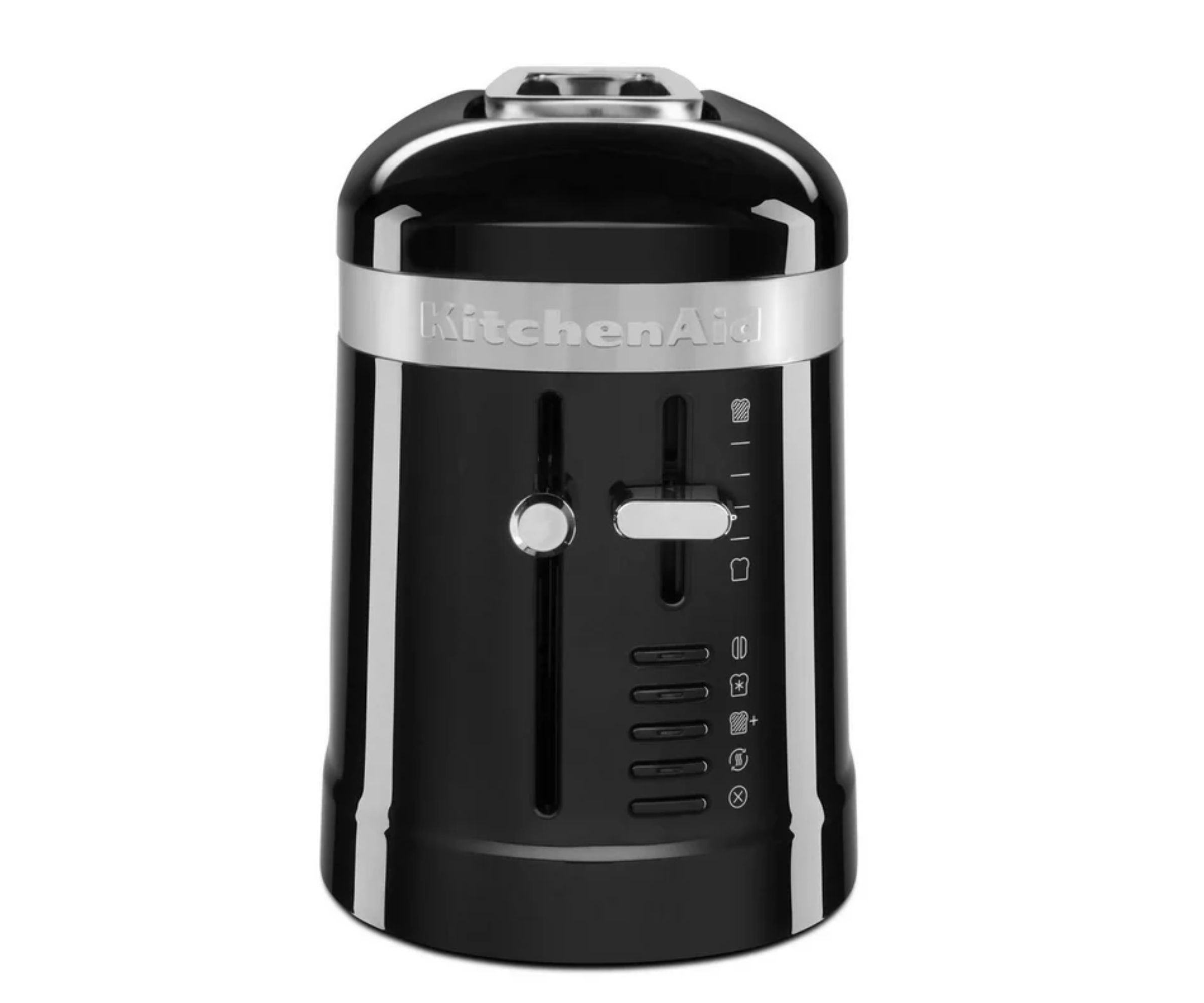
| Dimensions | 7.48 x 7.7 x 11.4 inches |
| Weight | 1 lbs |
| Slots | 2 |
| Power cord length | 3-1/2 |
| Slot size | 1-1/2 |
| Shade settings | 5 |
| Color options | Silver, brushed stainless steel, empire red, black |
Who would it suit?
The KitchenAid is small, compact, and comes with two, wide slots. It's a good option for compact kitchens, especially if you're shopping on a budget. This is quick to toast, but the two slots mean that this is better suited to smaller homes. If you have a lot of mouths to feed in the morning and you have to wait two minutes for two pieces of toast to be ready, you might find the capacity a little exasperating.
The KitchenAid retails between $60 and $80, so is a great, simple option, but that's also reflected in the aesthetics. This looks boxy and basic. There are some nice, classic KitchenAid color panels (red, black, and gray), which would look good if you have a color theme in your kitchen. However, they don't hide the fact that this looks pretty functional.
Unboxing
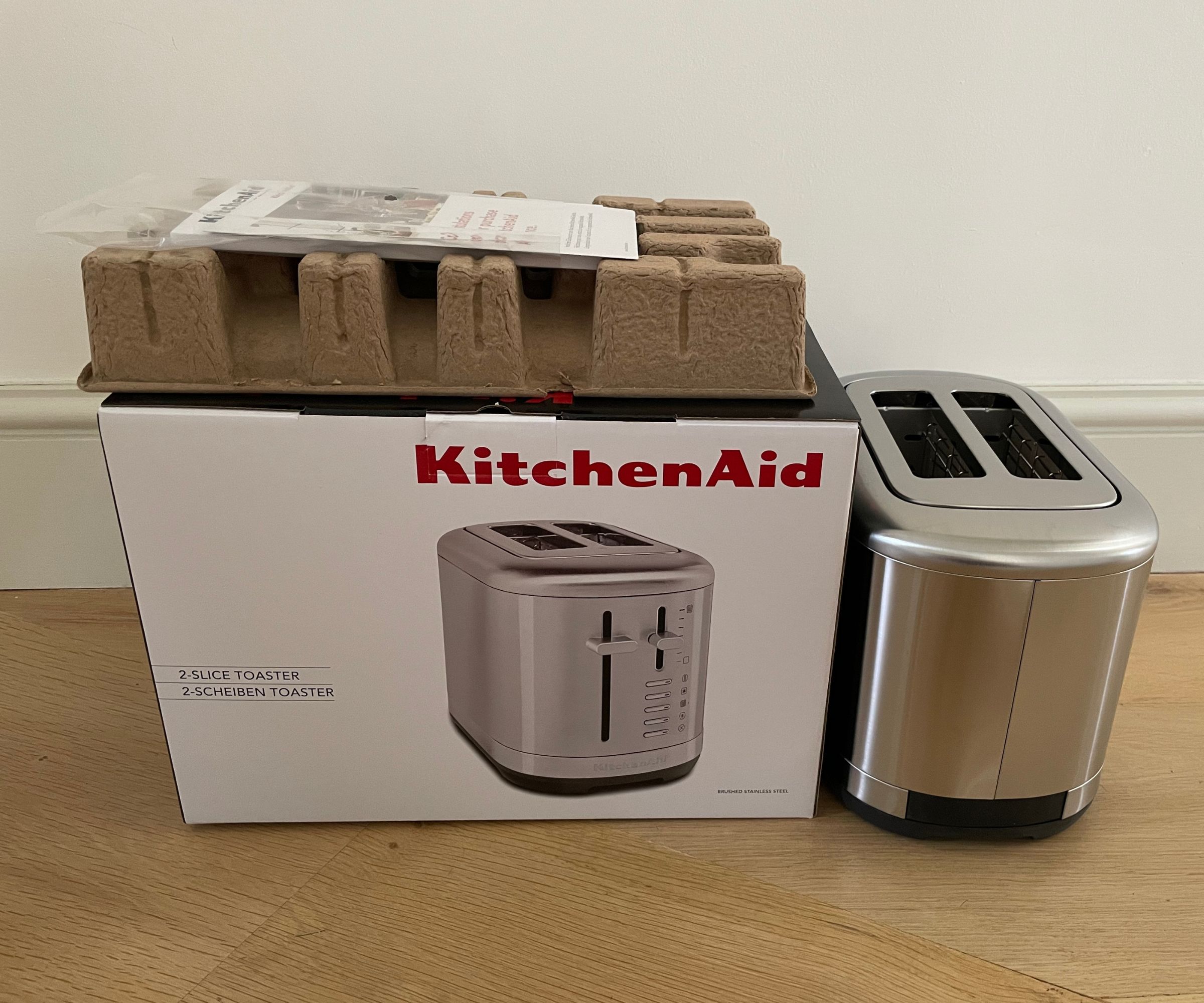
KitchenAid packaged the toaster well. The box's dimensions suggest that it's going to be a lot bigger than it is, which is a relief. It's not a heavy box, but it's an armful to carry. The reason it's so big is that they've surrounded the toaster with completely recyclable carboard, which wins big points with me. Not only does this mean that the toaster arrived in perfect condition, it didn't fill up my garbage.
On the countertop, the KitchenAid looks sleek. It's relatively small and a little boxy, but would look neat alongside other stainless steel appliances. KitchenAid offers the toaster in a few different colorways. They're still mostly stainless steel, but have red, black, or grey panels on. If you own a KitchenAid stand mixer, you can make a start with some color co-ordination.
What was it like to use?
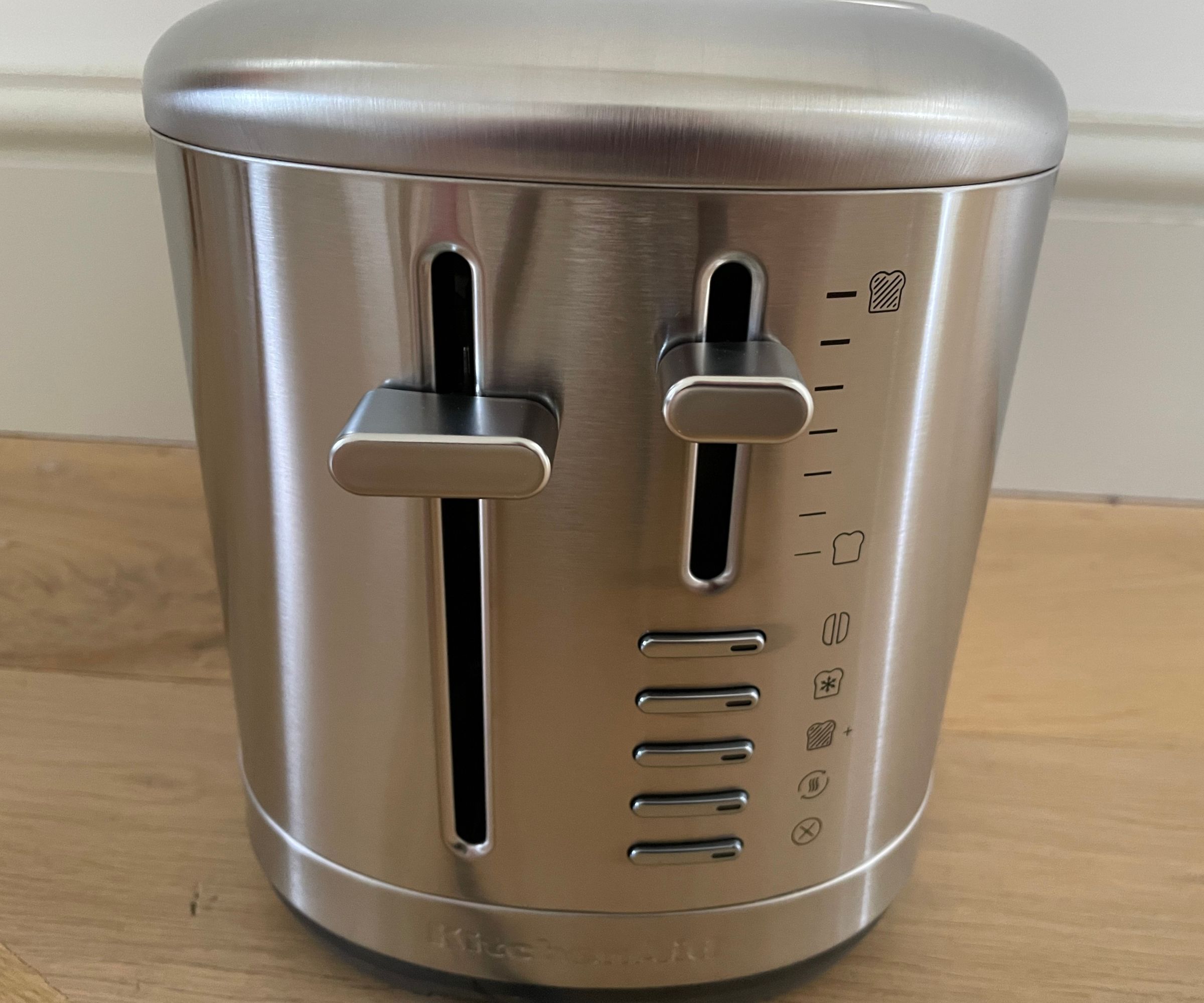
Before toasting, I pulled the lever down so that it ran through one toasting cycle totally empty. You don't need to do this before every use of the toaster, but it's standard practice to do the first time you ever use a toaster. You'll smell a slight plastic, burning smell, which isn't pleasant, but it disappears quickly and I didn't smell it again.
The controls are simple. There are five different strength settings as well as function buttons for bagels, defrosting, giving your toast 'a little longer', reheating, and cancelling your toasting session.
Test 1: White bread
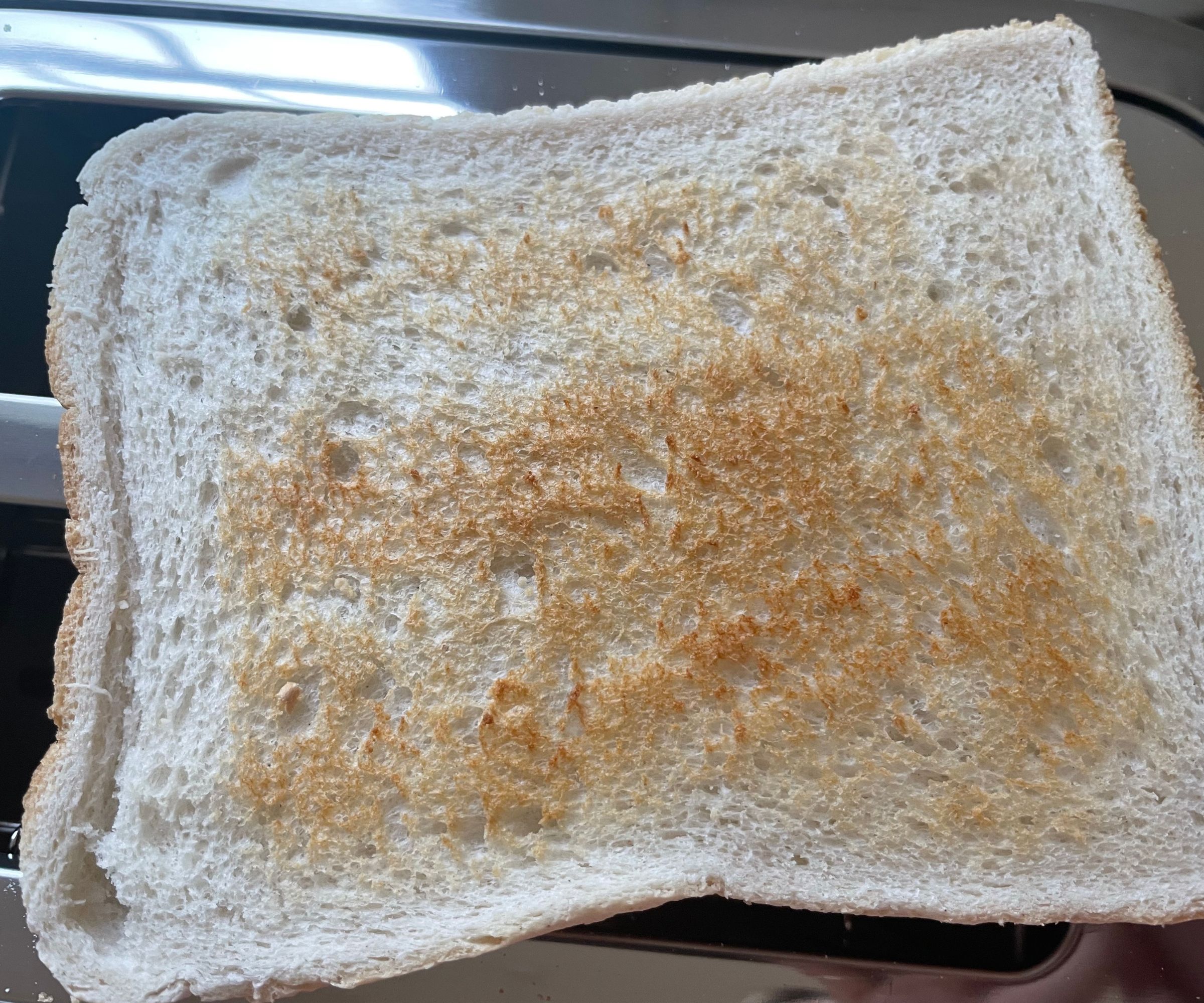
The standard test for every toaster is basic bread. We put a slice of white bread into the toaster and set it to medium strength for two minutes. This is the normal amount of time we allow for on our toaster tests and, as you might expect, it was all the time the KitchenAid needed.
Our toast popped up at two minutes precisely. It was browned evenly, not dried out, and warm enough for butter to melt into it, but not too hot to hold. Both sides looked very similar, so I have nothing but praise (and a stomach full of toast) after our first round of testing.
There’s also a useful setting for toasting frozen bread, which, whilst standard on most machines, is by no means consistent across them all.
I had a slice of frozen white bread in the toaster for three minutes and it came out overdone if anything. The good thing was that it was consistently overdone, so I knew the toaster was evenly heating my bread. You can treat the frozen setting with the same timings as you would normal toasting. My mistake is a good warning, though: this is a powerful toaster.
Test 2: Sourdough
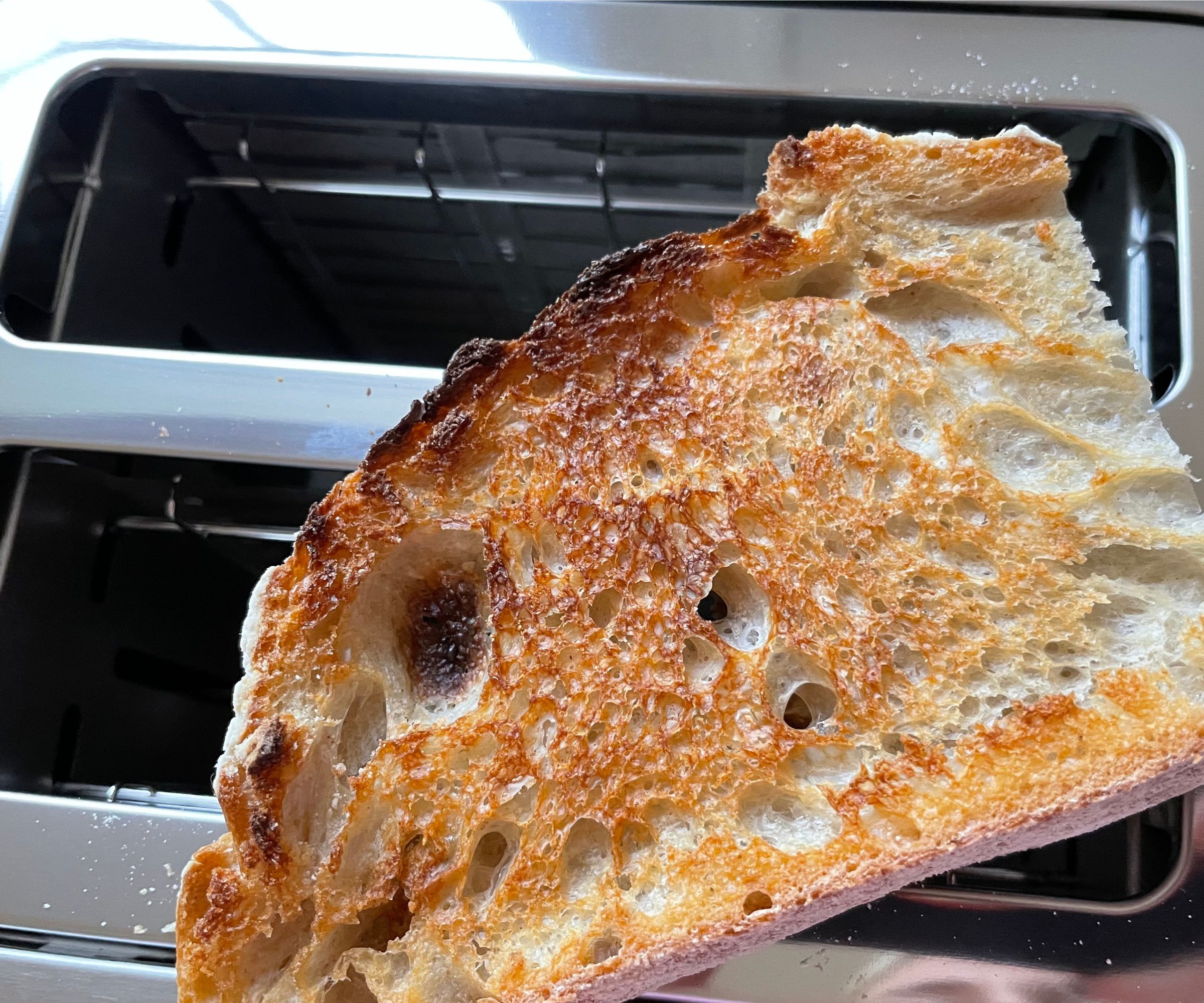
Even though the slots are nice and wide, they’re not quite long enough for a full piece of artisanal sourdough. Granted, there are only a few toasters (such as the Smeg four slice) which can handle this. The KitchenAid is not one of them.
I cut my original, slice in half and put it in the toaster for four minutes. When it popped up, the sourdough was a little browner than we wanted it to be, but it was still enjoyable and definitely edible. Again, it was a good temperature for spreading butter and peanut butter on, allowing them to melt and soften without dripping off the toast.
Test 3: Bagel
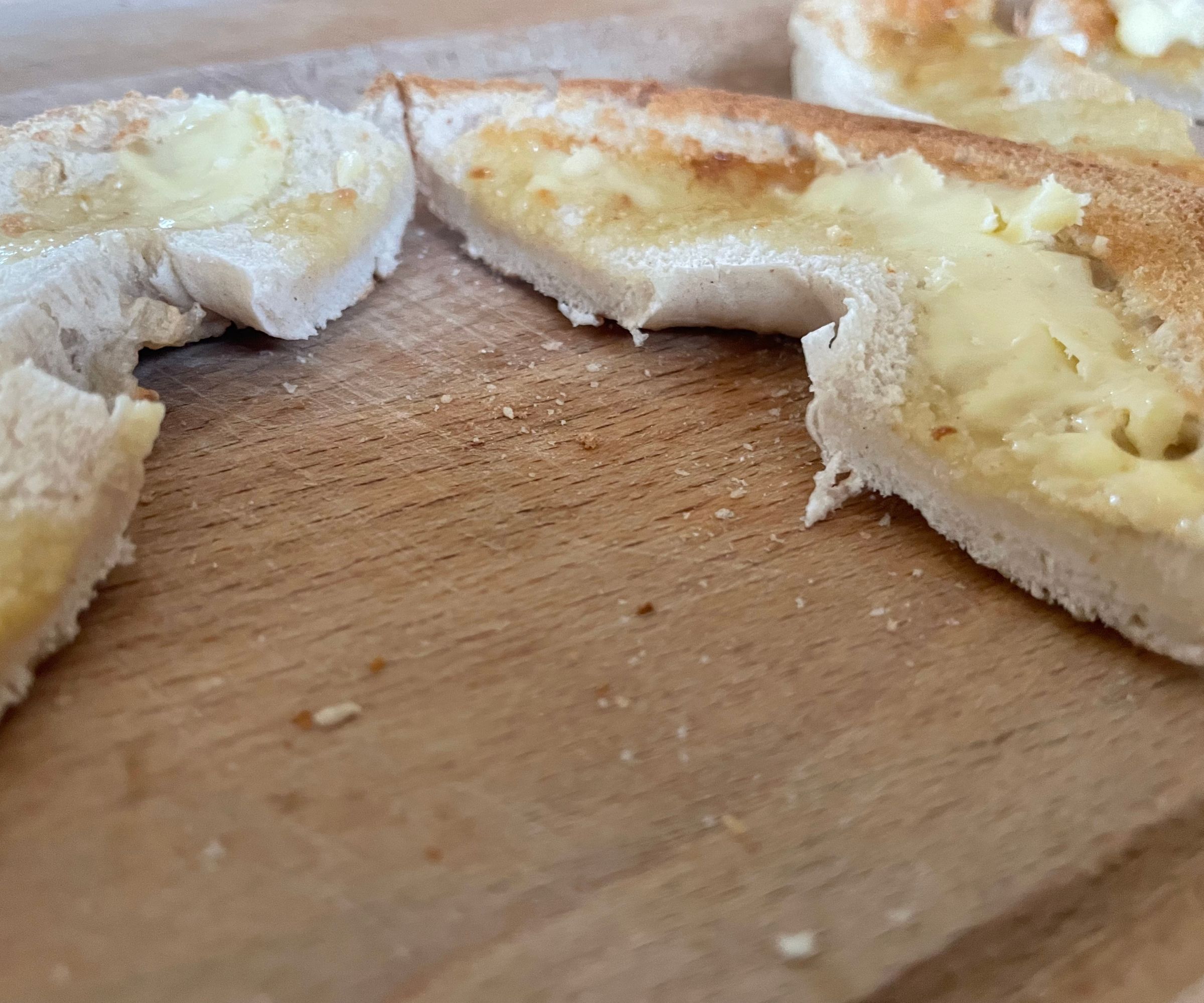
Thankfully, the KitchenAid has a specialised bagel setting: when I placed it in the toaster, I spotted that this sat in a nice and high position, easy to lift in and out.
I gave the bagel setting two minutes and, perfectly on time, it popped up. I was surprised at how well done it was. I like a marginally lighter toast, so would have preferred this to have finished about five seconds earlier. However, the rest of our testers enjoyed the soft and doughy inside, well toasted cut side, and just gently warmed outside. I couldn’t have hoped for a better bagel result.
Test 4: Gluten-free bread

Gluten free bread is notoriously difficult to work with. You never know how it’s going to toast or taste, but the KitchenAid was excellent. We set it for two minutes and, when it popped up, we thought we needed to use the ‘a bit more function’ to brown the toast a little more.
Our results were, again, faultless. The gluten free bread was golden across both sides. Sometimes the ‘extra time’ settings on toasters can dry out bread, but this one just gave a quick blast, enough to brown the outside of the toast whilst keeping it soft on the inside.
Test 5: Fruit bread
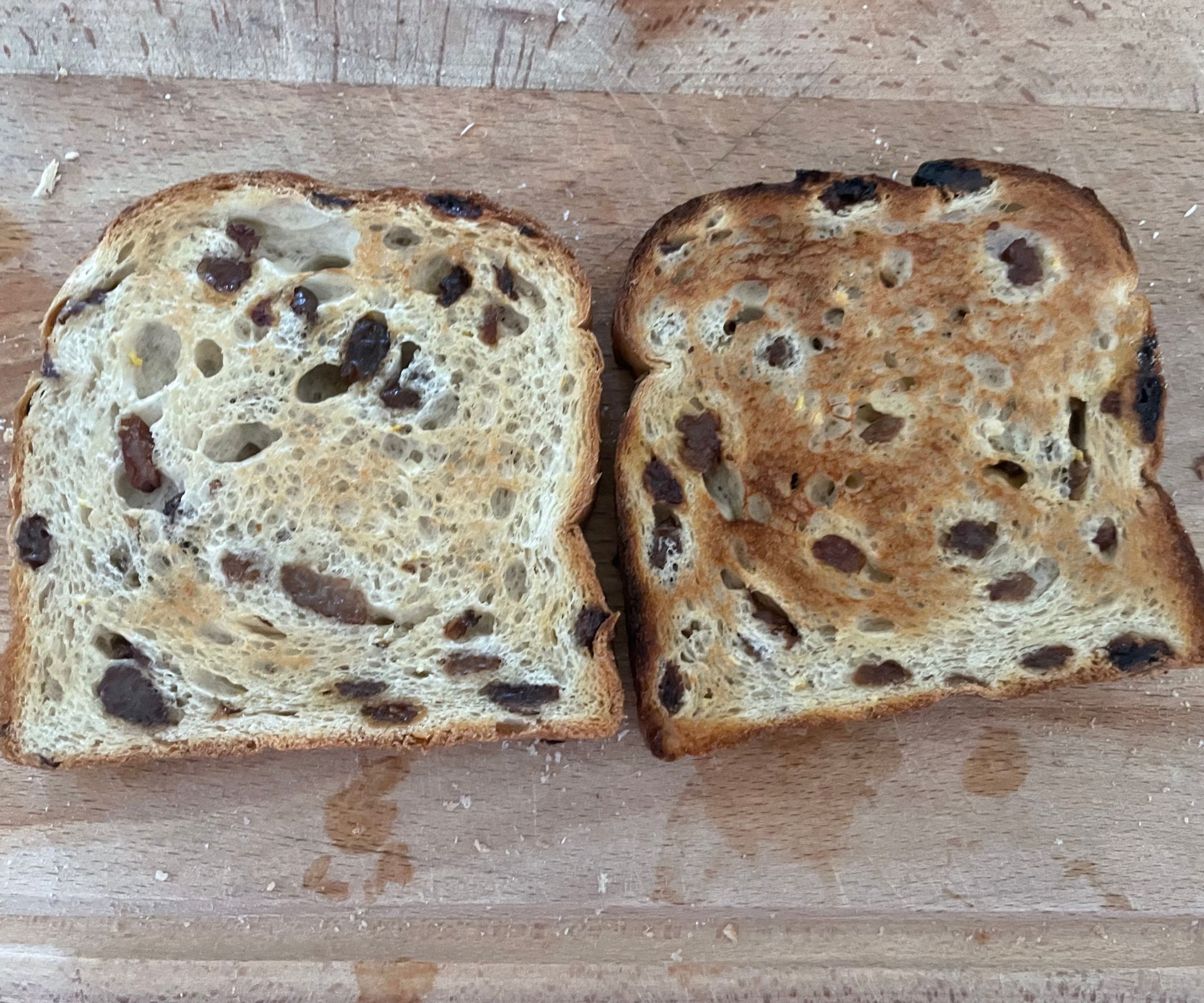
The fruit bread on the left is the light setting. On the right hand side, we put the fruit bread in on the next strength level up for the same amount of time.
Any kind of enriched dough, from brioche to cinnamon buns and fruit bread, can go from soft to scorched in a matter of seconds. I’m much more relaxed toasting these kinds of breads when there’s a dedicated setting for them, but in the KitchenAid, you can only control the power and strength. I turned it right down, nearly to the weakest setting and watched my fruit bread through the top, wide slots of the toaster.
The light setting is extremely gentle, so I had my slices in for a full two minutes before they automatically popped out. They were nicely browned, none of the fruit or rough edges had caught and burnt, and the bread was warmed right through. In my caution, I think this was on the lighter side of toasting. I increased the strength level by one increment and gave a new piece of fruit bread two minutes. You can see in the picture above that the second round was much closer to burnt, but still good. There are quite dramatic steps between the toasting strength levels and that's worth being mindful of.
Test 6: pop tart

If a toaster can’t nail pop tarts, I’m out of the room. It’s surprising how many over cook, under cook, or crumble these deliciously sweet treats. I kept the heat nice and light, putting my Cookies 'n' Cream flavor biscuit sandwich in for three minutes. It came out unscathed, looking perfect, but it felt hot. I broke it in half and could see the gooey insides oozing out, whilst my outside had stayed nice and crumbly. It was almost too hot to eat straight away and I would probably recommend leaving it for thirty seconds before you take a bite, but apart from that, this was perfect.
Cleaning, storage, and maintenance
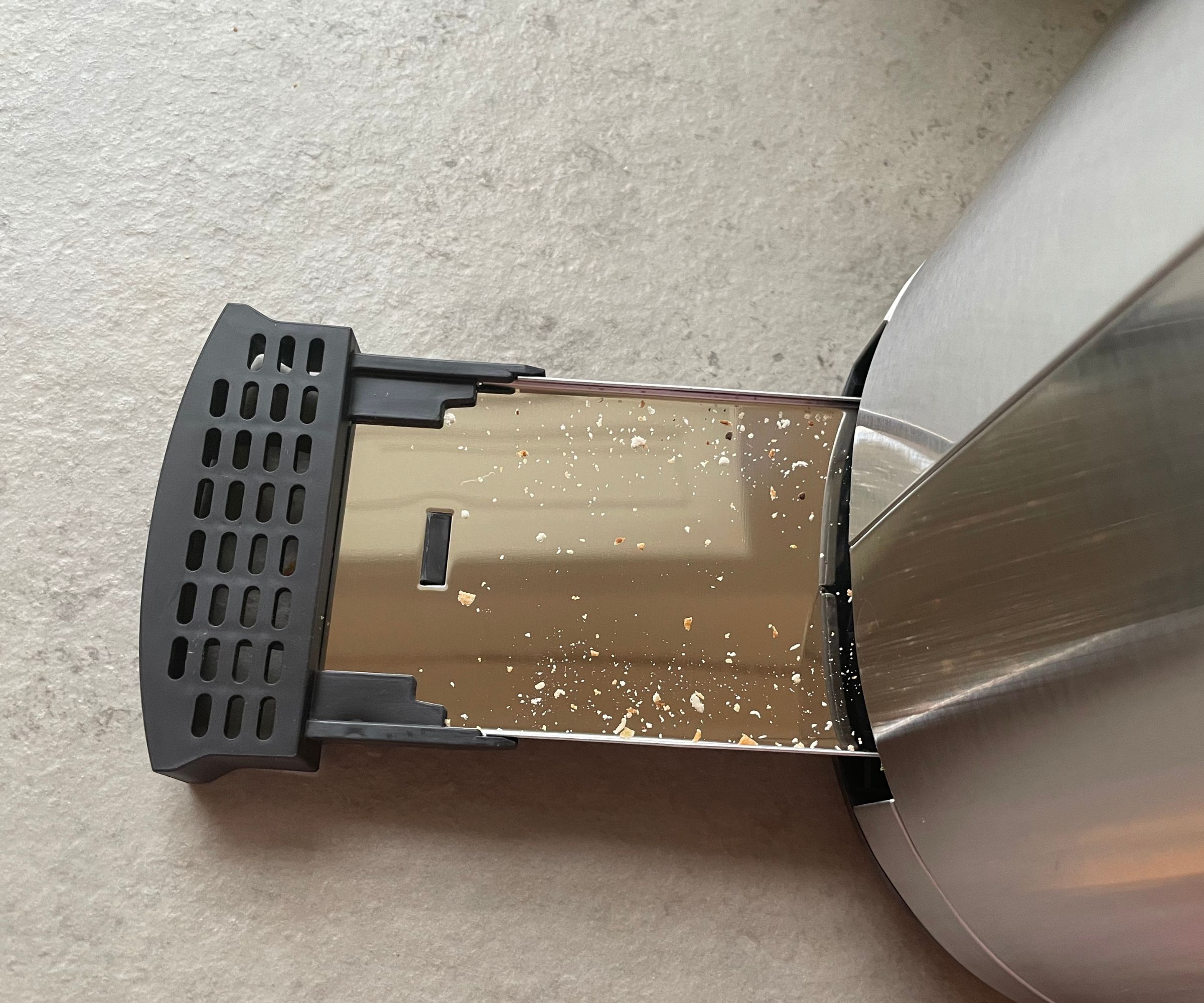
KitchenAid has put a lot of consideration into the clean-up process. The crumb tray is easy to slide out and wipe clean, plus the stainless steel exterior doesn’t show any fingerprint marks. It’s very low maintenance and small enough for compact kitchens.
In day-to-day storage this is easy to lift up and move around the countertop or cupboards.There’s also some neat cord storage underneath the toaster feet, so that you don’t end up with wires all over your kitchen when you're moving it around.
How does it rate online?
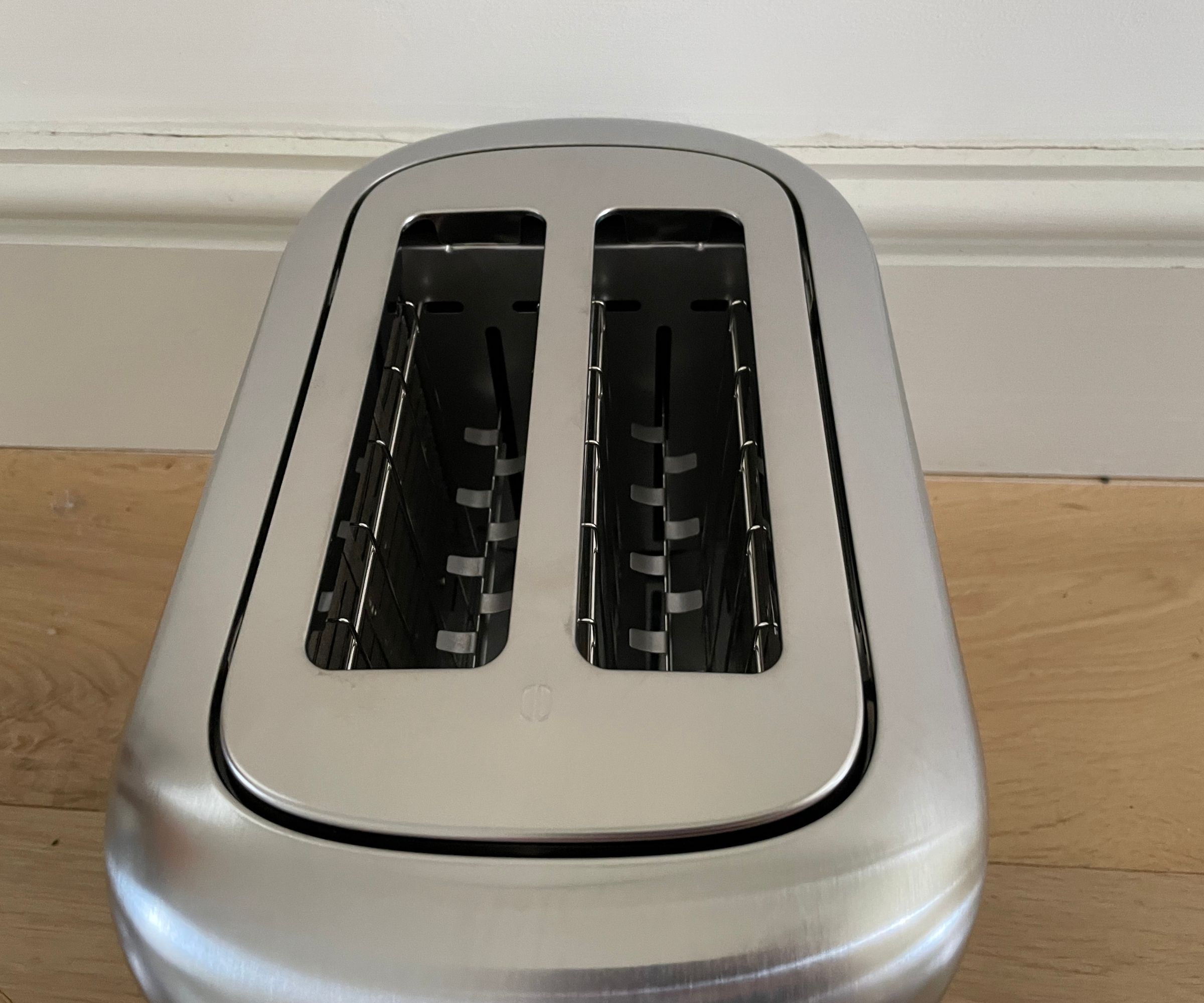
As you would expect, people love this online. Out of nearly 12,00 reviews on Amazon, this has an average of 4.4 stars. Reviews praise it for being well-built and durable. People loved wide toasting slots, allowing for good chunks of bread to sit comfortably in the toaster. The low maintenance exterior got a lot of online love too.
Criticisms were all on the topics that I expected. Some people wished for more capacity, more color options, and more toasting options. This is a basic toaster and, when it comes to KitchenAid products, some customers expected a little more. Customer reviews also mentioned a plastic smell the first time that you use the toaster, but that’s a close to universal experience. You should always run your toaster through one round of toasting before putting any bread in.
How does it compare?

There are two lines to choose between for the KitchenAid: the Artisan and the Manual Lift. This Manual Lift, stainless steel model is a kitchen essential. It’s well built and simple, perfect if you’re putting function at the forefront of your appliances. The Artisan is the luxurious, upgraded version of the Manual Lift. It comes with a greater range of colors, automatic lowering and lifting, as well as a cheese toastie option. However, the Artisan is much heavier and costs triple the price too. Whilst I love the luxurious functions, I often feel a little skeptical of auto-lowering systems. They feel premium, but if they break, you’re pretty screwed.
If you want more of a range of settings, Breville’s The Toast Select model is a similar size, but comes with specific toast settings (including for waffles, wholewheat bread, pastries), an LED countdown timer, and a more smooth and sleek aesthetic, rather than a boxy design. It makes great toast, but is, again, triple the price. If you're on a budget, you can't do better than the KitchenAid.
Should you buy it?

If you want a simple toaster, which is repairable and dependable, without any vanities, this is the one for you. It consistently toasted a range of breads without too much fuss. There are other, more beautiful and technical models on the market, but you'll need to double your budget to own one and you won't necessarily get better results.
How we test
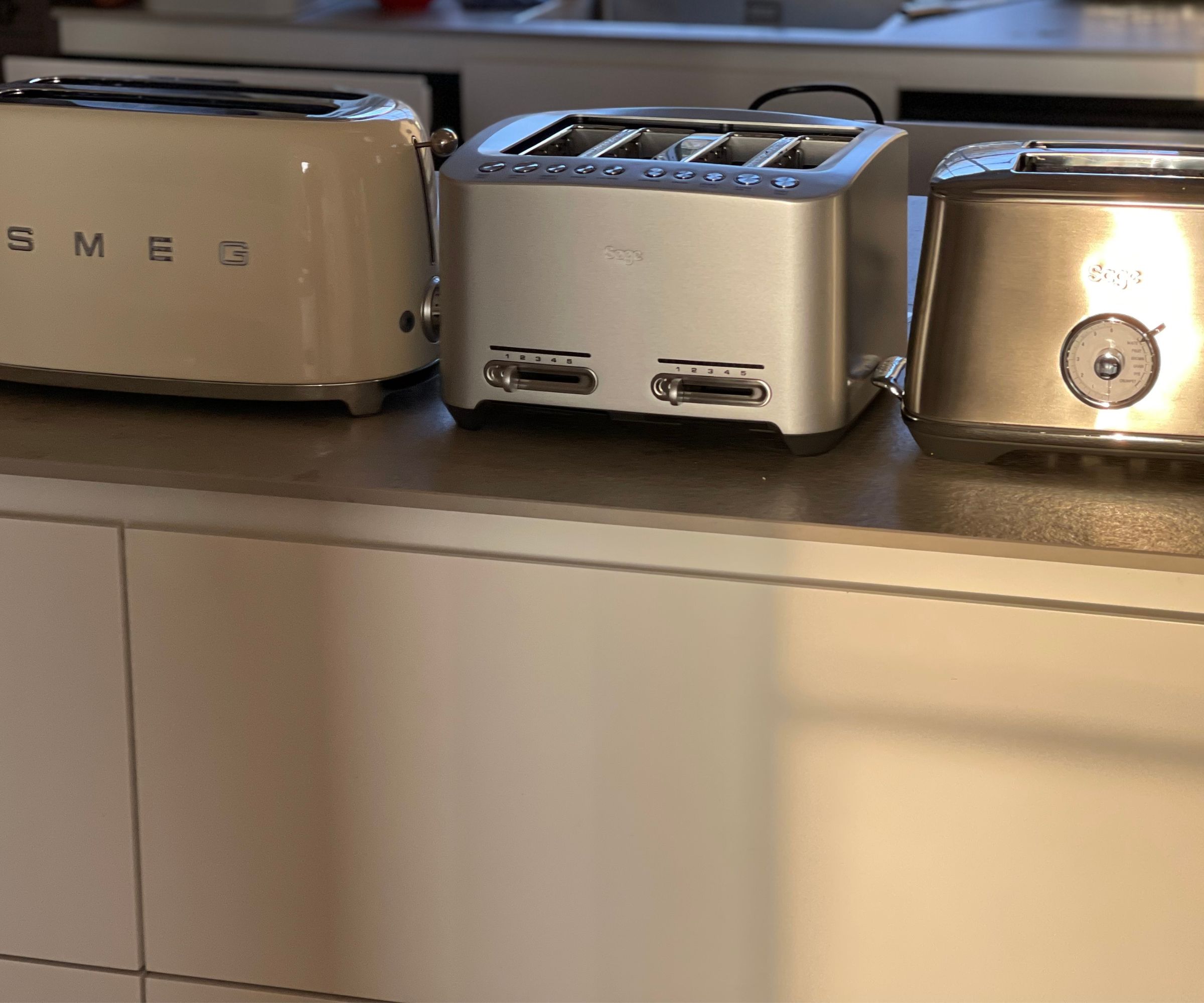
At Homes & Gardens, we take toaster testing very seriously. Before we recommend a product to you, we take it to our test kitchen. There, our team of experts will put it through our series of standardised tests, using it to toast white bread, sourdough, bagels, fruit bread, gluten free bread, and pop tarts. We do this to every single toaster we test, so that we can make direct comparisons between each toaster. If you’re interested in the process, you can visit our page to find out all about how we test.
Sign up to the Homes & Gardens newsletter
Design expertise in your inbox – from inspiring decorating ideas and beautiful celebrity homes to practical gardening advice and shopping round-ups.

Laura is our eCommerce editor. As a fully qualified barista, she's our expert in all things coffee and has tested over thirty of the best coffee makers on the market. She has also interviewed Q-Graders and world-leading experts in the coffee industry, so has an intimate knowledge of all things coffee. Before joining Homes & Gardens, she studied English at Oxford University. Whilst studying, she trained as a master perfumer and worked in the luxury fragrance industry for five years. Her collection of home fragrance is extensive and she's met and interviewed five of the world's finest perfumers (also known as 'noses'). As a result of this expansive fragrance knowledge, she always puts quality and style over quantity and fads. Laura looks for products which have been designed simply and with thoughtful finishes.
-
 Bryce Dallas Howard's bedroom is the most creative, social space in her entire home – she uses 'conversational seating' to create a multifunctional 'salon'
Bryce Dallas Howard's bedroom is the most creative, social space in her entire home – she uses 'conversational seating' to create a multifunctional 'salon'The actress's bedroom doubles as a home office thanks to its clever layout and furnishings, proving that this area is much more than a sleep space
By Hannah Ziegler Published
-
 Reese Witherspoon upgraded a small corner into a cozy reading nook – designers say you can replicate her 'ultimate little escape' (from $18)
Reese Witherspoon upgraded a small corner into a cozy reading nook – designers say you can replicate her 'ultimate little escape' (from $18)'It’s all about comfort, calm, and just the right amount of cozy': You only need three things to follow Reese's example – and it's not only for book lovers
By Megan Slack Published
-
 Kevin Bacon and Kyra Sedgwick's rustic kitchen island is stunning, but controversial – designers say you can get the look without the hassle
Kevin Bacon and Kyra Sedgwick's rustic kitchen island is stunning, but controversial – designers say you can get the look without the hassleA popular material finds an unorthodox home in the couple's kitchen, but experts disagree on whether it should be used – here's how to do it instead
By Sophie Edwards Published